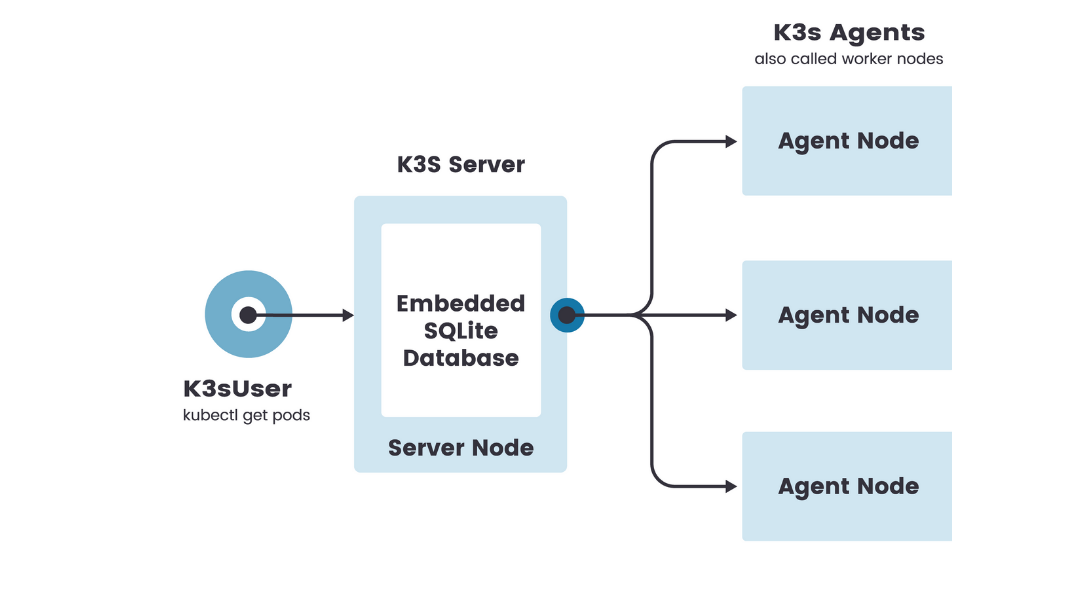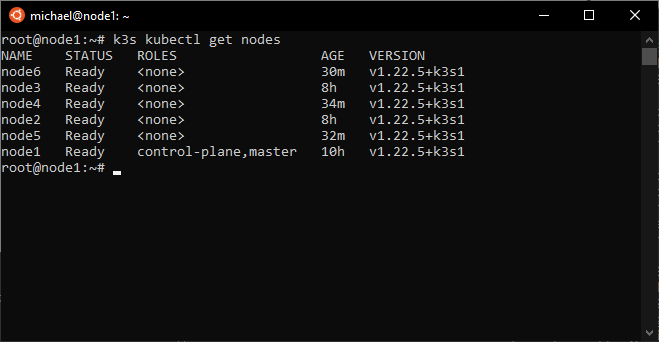k3s Installation
Published on 20 January 2022.
k8s -> k3s
In March 2021 I first posted about setting up a Pi cluster. Initially, I had tried (and subsequently failed) to set up a full-fledged Kubernetes (k8s) cluster. Then, I discovered k3s, a lightweight distribution of Kubernetes designed for edge environments (which also works on ARM devices). It ships with an embedded sqlite3 database as default storage when setting up a server node but it is trivial to use etcd3/MySQL/PostgreSQL if desired. I was very pleased with how simple the k3s launcher is and it made the entire installation experience straightforward.
Architecture

I based my installation on the single-server setup with an embedded database documented by Rancher. In my configuration, node1 is running k3s in server mode and node[2:6] is running it in agent mode. Here’s a breakdown of what I had to do to install k3s.
Installation
Note During the installation process I encountered this error:
[INFO] Failed to find memory cgroup, you may need to add "cgroup_memory=1 cgroup_enable=memory" to your linux cmdline (/boot/cmdline.txt on a Raspberry Pi)
To resolve the issue, I added the recommended flags to the linux cmdline as the error message suggests on each node before installing k3s.
On node1 I installed k3s.
curl -sfL <<<<<<<<https://get.k3s.io>>>>>>>> | sh -
Then, I started k3s in server mode:
k3s server
The other nodes were even easier. When it’s installed and run, k3s will check for K3S_URL and K3S_TOKEN environment variables. If they are set, then k3s assumes this is a worker node and starts up in agent mode. As root, I copied the token value from node1:/var/lib/rancher/k3s/server/node-token and used the following command to install k3s and automatically register the node with the server running on node1 (full token values omitted):
curl -sfL <<<<<<<<https://get.k3s.io>>>>>>>> | K3S_URL=<<<<<<<<https://node1:6443>>>>>>>> K3S_TOKEN=K109...f2bb::server:bc1...2e9 sh -
Result
I checked out the results of my installation on node1 using k3s kubectl get nodes.


About michaellamb.dev
Michael Lamb is a software engineer working at C Spire. If you have a blog-specific inquiry please create a new issue on GitHub. Feel free to fork this blog and build your own!Get to know who I am in my first post Hello, World!